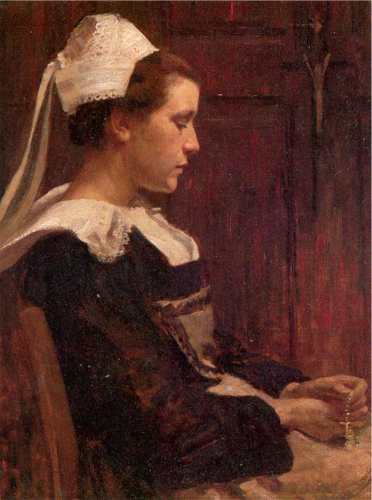Aspects of New Zealand Art 1890 - 1940
ANN CALHOUN
At the time of its foundation as The Fine Arts Association of New Zealand (1882) and later incorporation as The New Zealand Academy of Fine Arts (1889), the Academy saw its primary purposes as: annual and other exhibitions for its members, an art gallery, art school and the formation of a collection. In 1936, the Academy turned over the art works it owned and those it had held in trust to the National Art Gallery. During this same period, the arrival in New Zealand of Nairn, Van der Velden and Nerli brought new attitudes to the New Zealand art scene - among other things a greater willingness to experiment.
The establishment of the Wellington Art Club in 1892 by James M. Nairn can be linked to the excitement this artist generated in the capital. What is not generally known is that the Club rented rooms from the Academy for these classes. By this means the Academy fulfilled one of the traditional roles of an art academy, and one of the aims of the Academy founders, namely the provision of an art school or art classes.

SYDNEY THOMPSON The crucifix c. 1906 oil on canvas, 730 x 525 mm. (Collection of the National Art Gallery, Wellington)
The Academy meted out less supportive treatment to Van der Velden during his stay in Wellington, despite his passionate support for the provision of a national gallery. To keep the Memory or Honour as such a Mother as Queen Victoria, under such circumstances is super Human; King Edward has done it. The lesson we want to keep his honour is to build an Art Gallery to the Memory of Edward the VII.1 Much later, in 1922, the Academy acquired a selection of the artist's oeuvre through an anonymous donor, G.A. Troup (later Sir George Troup, Mayor of Wellington). A Nerli At Rotorua was gifted to the Academy in 1923 by the widow of Noel Barraud.
Influential works of Frances Hodgkins, Owen Merton, Sydney Thompson, D.K. Richmond and Raymond McIntyre had been acquired early in the century by the Academy. All these artists had worked overseas or were expatriate New Zealanders. We now like to classify these works as by New Zealand artists and consider them as components in the growth of New Zealand art. But, seemingly as important at this time, the Academy sought to acquire British art: from the New Zealand International Exhibition in Christchurch in 1906 - 07. At the same time, acquisitions were made in Britain from funds collected in New Zealand; in 1912 and 1914 purchases and donations were selected from collections of British art brought to New Zealand by John Baillie (an expatriate running a dealer gallery in London); and subsequently, from exhibitions brought to New Zealand in 1928, 1930, 1932, 1935, 1936 and 1940 by one of or both Edwin and Mary Murray Fuller.

CHRISTOPHER PERKINS Road gang c.1930 pen and ink with wash, 381 x 266 mm. (Collection of the National Art Gallery, Wellington)
In further tribute to overseas experience, the Academy had in the nineteen-twenties made exhibition space available to individual artists meeting this requirement: James M. Nairn in 1920; Nugent Welch in 1921; Petrus van der Velden in '1923; Sydney Thompson in 1924; Maud Sherwood in 1925; Alfred Walsh and Albert Hanson in 1926; and Archibald F. Nicoll in 1927. The place of the art society had been 'a necessity, a means of moral and of some financial support for the artist, and a means of making the artist a cultural force in New Zealand society. As the nineteen-thirties began, entrenched academic ideals limited the Academy's ability to adapt to new ideas. From Christopher Perkins's 1931 exhibition (at Kirkcaldie & Stains's gallery) only one work, a drawing of a road gang, was purchased.
Although Academy members professed their friendship with Perkins, his attacks on the establishment, known from the pages of Art in New Zealand, may have created enmity, and as a result, his artistic statements were little understood.

JAMES M. NAIRN A summer idyll 1903 oil on canvas, 1531 x 1834 mm. (Collection of the National Art Gallery, Wellington)
As has happened with many other artist member organisations, here and overseas, the Academy in 1936 gave its own collection of art works to form the basis of a public art collection. The National Art Gallery is getting ready to move to new premises in 1990 and has prepared the exhibition Aspects of New Zealand Art 1890 - 1940 as a means of cataloguing an important section of the Gallery collection. The catalogue accompanying the exhibition gives due cognisance to the Academy's role in the history of New Zealand art. Aspects of New Zealand Art 1890 - 1940 opened at the National Art Gallery on 15 September 1984.
1. Hocken Library, University of Otago, Dunedin. Van der Velden's letter to Wardell, President, Academy, after 6 April 1910. (Copy held by the Alexander Turnbull Library)
